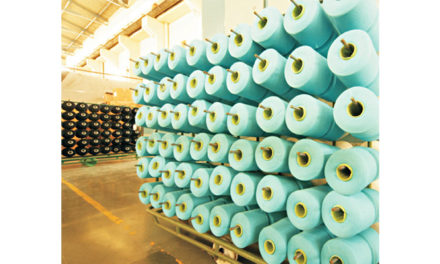 The fiscal year 2022–2023 was difficult for the industries in Gujarat, particularly on the export front. The invasion of Ukraine by Russia and its effects on the world economy has reduced demand globally.
The fiscal year 2022–2023 was difficult for the industries in Gujarat, particularly on the export front. The invasion of Ukraine by Russia and its effects on the world economy has reduced demand globally.
There is a global scarcity of dollars needed to make payments in many nations. India was able to experience a surge in exports despite growing recessionary trends. Gujarat’s major industries saw mixed results as the pharmaceutical and engineering sectors saw growth while textiles and chemicals saw a decline.
Pathik Patwari, President of the Gujarat Chamber of Commerce and Industry (GCCI), said, “India’s total exports for FY 2022-23 are expected to touch $ 760 bn. New age economy, especially the services sector, figures significantly in exports. IT, ITeS, artificial intelligence, machine learning, etc are emerging as significant export contributors. However, exports from conventional sectors like textiles and chemicals have decreased sharply due to global factors. The government needs to incentivise production to make it more competitive in the global markets. ”
The entire value chain was impacted when Indian cotton prices rose to an all-time high of Rs. 1 lakh per candy in the first quarter of FY 2022–23. The Confederation of Indian Textile Industry (CITI) reports that between April 2022 and February 2023, India’s textile exports experienced a decline of 23.57 percent.
“While Indian cotton is now costlier for overseas markets, prices have dropped to roughly Rs 60,000 per candy level. Gujarati textile manufacturers are unable to compete with those in Bangladesh, China, and Vietnam. Due to high cotton prices and weak demand, our exports for the fiscal year dropped. Demand from the US and Europe has remained noticeably weak,” Rahul Shah, Co-Chairman of the GCCI Textile Taskforce, said, “We might see increase in FY 2023–2024,” he added.
The Chairman of the manufacturing and exporting company Kankariya Textile Industries Pvt Ltd, P R Kankariya, stated, “The textile sector has extensively invested in export-oriented plants, but needs government incentives. The quality of Indian textiles is rising, and there are numerous prospects. The government must, however, make sure that the sector receives timely incentives.”
Last fiscal year, Gujarat’s chemicals industry, particularly its dyes and intermediates plants, endured one of its most difficult periods. The market for dyes and intermediates was impacted by the global textile industry’s sluggish demand.
Exports of dyes and intermediates decreased by almost 20 percent in FY 2022–23. India exported dyes and intermediates worth $ 2,927 mn between April 2021 and February 2022. This was down 18. 88 percent from the same period in FY 23 when it came to $ 2,374 mn.
Given that Gujarat accounts for 70 percent of the nation’s output of dyes and intermediates, low demand and price fluctuation have had an impact on Gujarat’s exports of these products, according to Ankit Patel, a former president of the Vatva Industries Association.










